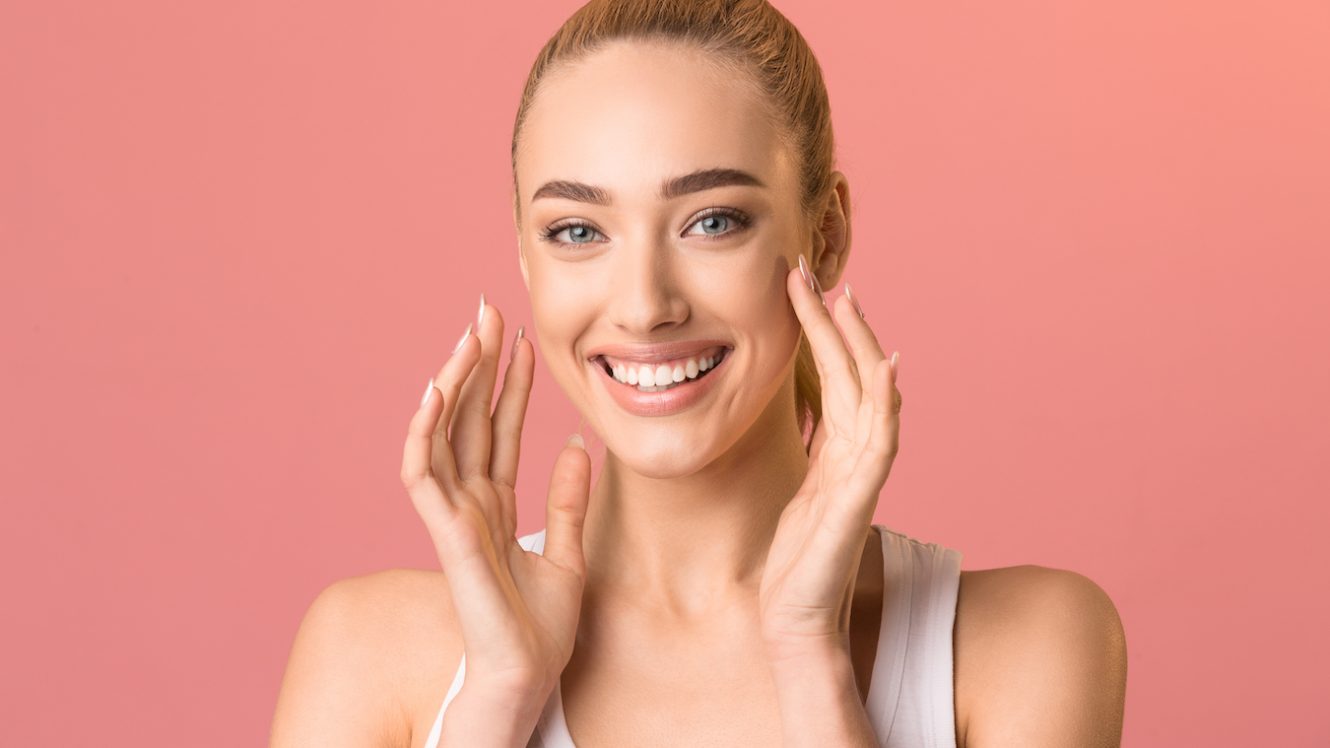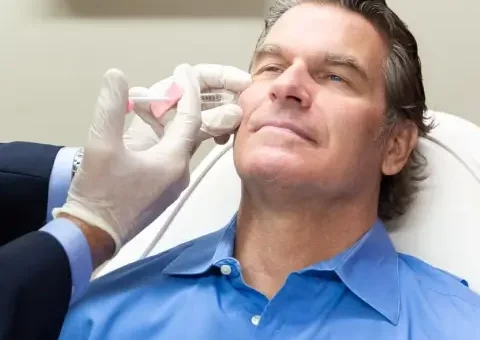Understanding the Causes of Dark Circles
Dark circles can result from various factors, each contributing to the appearance of shadowy, discolored skin under the eyes. Identifying the cause is the first step towards effective treatment.
Dark circles tend to be more pronounced when you’re tired. Understanding these causes can help you identify potential solutions and prevention strategies.
Genetics
Genetics can contribute to dark circles in several ways, including:
Skin Pigmentation
Genetics can influence the amount of melanin in your skin, leading to a darker appearance under your eyes known as hyperpigmentation. This is a common genetic trait in some individuals.
Skin Structure
Your genetic makeup can also impact the composition of your skin and facial structure. If you have thinner skin around your eyes, the underlying blood vessels may be more visible, making dark circles more pronounced.
Family History
If dark circles run in your family, you might be more likely to have them. Dark circles that have persisted since childhood are often a result of genetic factors.
Ethnic Background
Individuals who are of African, Asian, Indian, or Middle Eastern descent may experience more noticeable dark circles due to pigmentation issues inherent in their ethnic background.
Lack of Sleep
Lack of sleep is a major cause of dark circles under the eyes. Insufficient rest leads to dilated blood vessels, which makes the skin appear darker and puffier. Additionally, sleep deprivation can make your skin paler, highlighting the dark tissues and blood vessels underneath. Fluid buildup is another consequence, causing puffiness and shadows. Aim for seven to nine hours of sleep each night to minimize these effects and maintain healthier under-eye skin. Chronic stress, exacerbated by lack of sleep, can also damage collagen, reducing skin firmness and smoothness.
Aging
As we age, the skin loses fat, collagen, and thickness, making veins and blood vessels more visible and contributing to dark circles. Additionally, aging can lead to tear troughs—hollowed areas under the eyes—that create shadows and a puffy appearance. Sagging eyelids can cast shadows that accentuate dark circles, while pigmentation irregularities, such as excess melanin or constricted blood vessels, further darken the skin. Sun exposure, which accelerates aging, expedites these processes, worsening the appearance of dark circles.
Sun Exposure
Sun exposure can lead to dark circles under the eyes by triggering excess melanin production, causing hyperpigmentation. This condition, known as UV-induced hyperpigmentation, darkens the sensitive skin around the eyes. Protecting this area with sunscreen and sunglasses can help prevent UV damage.
Lifestyle Factors
Poor diet, dehydration, and habits like smoking and alcohol consumption can exacerbate the appearance of dark circles. A healthy lifestyle, including a balanced diet and proper hydration, can improve skin health and reduce discoloration.
Breakthrough Ingredients in Dark Circle Treatments
Recent advances in skincare have introduced powerful ingredients that target dark circles effectively. Here are some of the most promising options:
1. Peptides and Growth Factors
Peptides and growth factors reduce dark circles by enhancing skin quality and texture. They stimulate collagen production, which keeps the skin firm and smooth, thereby thickening the skin under the eyes and reducing the visibility of blood vessels and pigmentation. Additionally, peptides strengthen the skin’s barrier function, improve hydration, and reduce inflammation and irritation. By enhancing skin tone and texture, these ingredients can address the underlying issues contributing to dark circles, making the skin appear more vibrant and healthier.
2. Vitamin C and Antioxidants
Vitamin C is a powerful antioxidant that brightens the skin and reduces pigmentation. Combined with other antioxidants, it helps protect the skin from free radical damage, promoting an even skin tone. Additionally, Vitamin C is a great collagen booster, enhancing skin elasticity and maintaining a youthful glow. It also keeps the under-eye area moisturized, preventing dark circles. Vitamin C effectively diminishes the appearance of dark circles by inhibiting melanin production, protecting the skin from environmental damage, providing hydration, reducing redness, and soothing the skin while reducing puffiness.
3. Hyaluronic Acid and Hydration Boosters
Hyaluronic acid and proper hydration can significantly reduce the appearance of dark circles. Hyaluronic acid, a natural component of the skin, hydrates and renews skin cells. It brightens and firms the skin around the eyes, diminishing dark circles when included in eye serums. Hyaluronic acid injections can fill hollows and smooth the under-eye area, reducing shadows. On the other hand, hydration boosts blood circulation, mitigating the prominence of dark circles. Dehydrated skin loses elasticity, making dark circles more visible, so maintaining hydration is crucial for a healthier appearance.
4. Retinoids
Retinoids help reduce dark circles by improving skin texture, boosting collagen production, and increasing cell turnover. Boosting collagen production plumps the skin, making it less thin. By increasing cell turnover, retinoids exfoliate the skin making it smoother and softer.
Advanced Treatments and Procedures
For those seeking more intensive solutions, advanced minimally invasive treatments and procedures offer promising results:
1. Laser Therapy
Laser therapy effectively reduces dark circles under the eyes by stimulating collagen production, which enhances skin elasticity and thickness. It breaks down excess melanin, minimizing pigmentation irregularities and improving overall skin volume and appearance. Vaporizing damaged skin cells and tightening the skin, laser therapy provides a refreshed look.
2. Dermal Fillers
Dermal fillers can be an effective solution for reducing the appearance of dark circles. By increasing collagen, these fillers help thicken the skin, making it less transparent and reducing the visibility of underlying blood vessels. They can also fill in under-eye hollows that create shadows, thereby diminishing the depth of these shadows. Additionally, dermal fillers smooth out negative contours in the troughs and upper cheeks, eliminating deep color and shadowing, and providing a more youthful, refreshed appearance.
3. Microneedling with PRP
Microneedling combined with PRP (platelet-rich plasma) can significantly reduce the appearance of dark circles under the eyes by boosting collagen and elastin production while promoting blood vessel growth. The increased collagen production thickens the skin, making it less translucent and masking dark circles caused by visible blood vessels or hollow tear troughs. Improved elastin production tightens and firms the skin, reducing sagging and puffiness. Additionally, PRP encourages the growth of new blood vessels, which helps wash away fluid that causes eye bags and enhances the elasticity of existing vessels reducing the likelihood of breaking and bruising. Microneedling creates micro-injuries in the skin that initiate a wound-healing response, with adjustable needle lengths for targeted treatment of specific skin concerns.
4. Chemical Peels
Chemical peels can effectively reduce the appearance of dark circles by exfoliating the skin, removing dead skin cells, and promoting cellular regeneration. By removing the top layer of skin, chemical peels eliminate pigmented cells that contribute to dark circles, brighten the under-eye area, and improve overall skin tone for a more even and refreshed appearance.
Holistic Approaches and Lifestyle Adjustments
In addition to topical treatments and procedures, holistic approaches and lifestyle adjustments can play a significant role in reducing dark circles:
1. Improving Sleep Habits
Improving sleep habits can significantly reduce dark circles. Lack of sleep can cause fluid retention and swelling around the eyes, leading to dark circles. It also dilates blood vessels under the eyes, creating a dark bluish hue. Sleep deprivation often results in paler, duller skin, making blood vessels and dark tissues more noticeable. Furthermore, sleep is crucial for tissue repair and skin healing. Elevating your head while sleeping can improve blood flow and prevent pooling, reducing dark circles and bags. Seven to nine hours of sleep per night will help you to look and feel rested.
2. Diet and Hydration
Improving your diet and staying hydrated can greatly reduce dark circles under your eyes. Drinking 2.7–3.7 liters of water daily enhances blood flow and skin elasticity, preventing dullness and fluid retention that accentuate dark circles. A balanced diet rich in vitamins and minerals supports skin health, with antioxidant-rich foods like berries and leafy greens providing protection and healing. Vitamin C boosts collagen production, nourishing the under-eye area, while applying Vitamin E oil mixed with coconut or olive oil can treat dark circles and wrinkles. Consuming hydrating foods like cucumbers, watermelon, and collagen-rich foods helps strengthen the muscles and tissues supporting your eyelids, which naturally weaken with age.
3. Stress Management
Stress can lead to dark circles under the eyes, causing diverted blood flow, ruptured capillaries, and sleep disruption. When stressed, blood is sent to vital organs away from your face, making your skin appear paler and the blood vessels under your eyes more visible. Additionally, excessive stress can cause the delicate capillaries around your eyes to rupture, leading to blood leakage and darkening the area. Finally, stress-induced sleep disruption further contributes to the appearance of dark circles. Managing stress can help mitigate these effects and reduce dark circles.
Effective stress management techniques, such as meditation, yoga, or exercise, can improve overall health and reduce the appearance of dark circles.
4. Sun Protection
Sun protection is crucial for reducing dark circles as it prevents and minimizes sun damage to the under-eye area, a key factor contributing to dark circles. UV rays can cause skin damage and inflammation, leading to dark circles and hyperpigmentation; therefore, wearing a broad-spectrum sunscreen with UVA and UVB protection around the eyes is essential. Additionally, some sunscreens contain iron oxides, which shield against visible light wavelengths that can cause hyperpigmentation. Maintaining skin health and resilience through sun protection can also reduce the likelihood of dark circles forming or becoming more pronounced. Finally, wearing sunglasses offers additional protection from UV damage to the eyes.
Conclusion
Dark circles can be challenging to treat, but with the right approach, significant improvements are possible. There are many ways to address this common concern; from understanding the causes to exploring advanced treatments and holistic approaches.
At the Skin Rejuvenation Clinic in Edina and Bloomington, MN, we provide advanced, cutting-edge treatments and procedures, from laser therapy to chemical peels, to help you achieve a brighter, more youthful appearance and minimize dark circles. Contact us today to book a consultation and discover the best treatment options!




